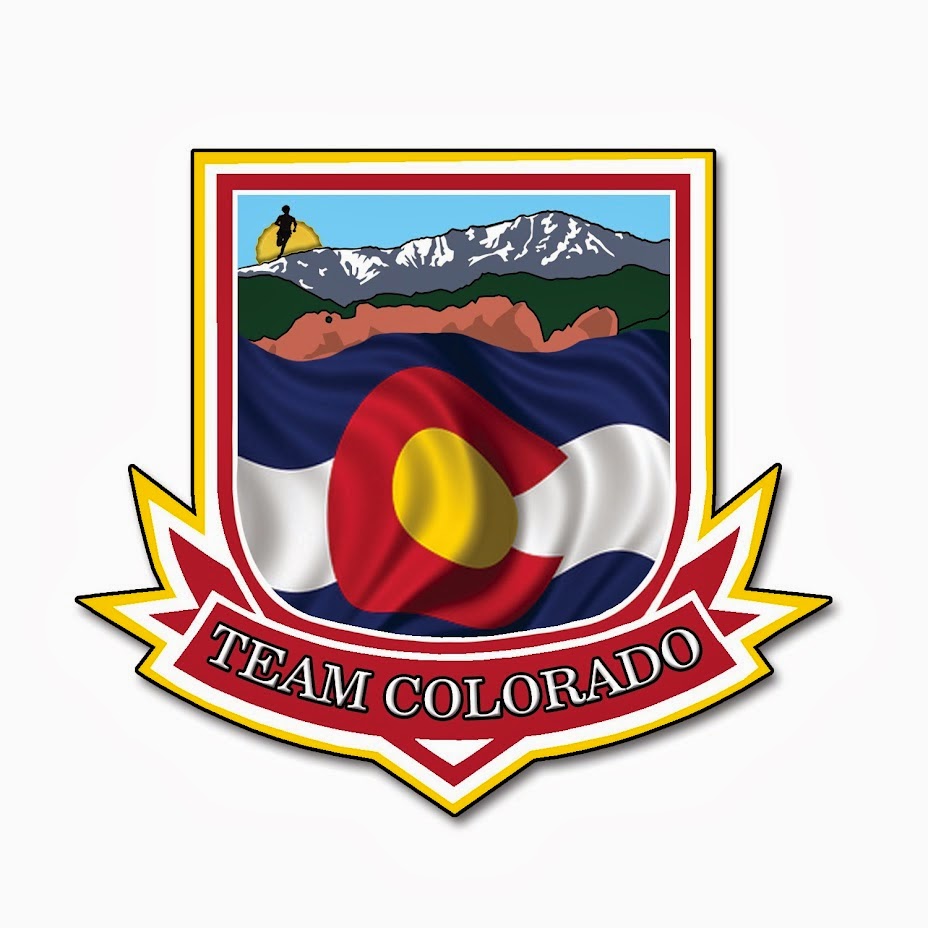 |
| Brandon, on his way to completing PU: The Stank photo: Dave Labosky |
"Pee-ew!”
When you hear someone say this, something in
your olfactory senses tells you it must be very stanky, right? Well, yes, that
is what should happen when you run up and down the 14,115-foot Pikes Peak four
times and accumulate 100 miles along with 31,200+ feet of elevation! That is
exactly what Team Colorado's own Brandon “The Stank”
Stapanowich did this past weekend at the Pikes Peak Ascent & Marathon in
Manitou Springs, CO. This is not the first time he has accomplished it, either.
Back in 2013, he completed Pikes Ultra, aka PU: The Stank after battling
sub-zero temperatures and a few hours of sleep in the fetal position, hugging
the compostable toilet at Barr Camp at 4am, to stay warm. He’s done the
Inclinathon (13 times up and down the Manitou Incline, about a marathon in
length), the UltraInclinathon and even one of the very few who has completed Nolan’s 14 in under 60 hours.
After coming off his new birthday adventure,
a self-supported, 485-mile Colorado Trail record from Durango to Denver (DuDe) in 9
days, 14 hours, 28 minutes just a month ago, Brandon was keeping
his next fantastical adventure quiet because he didn’t know how the body was
going to be feeling after such a long effort. “It
was something that I had a hard time committing to as I wasn’t sure if I’d be
recovered enough from finishing Colorado Trail a month ago.” Stealthily,
he jumped in the Pikes Peak Ascent on Saturday and said, “I went into it planning on just taking one lap at a time.
That way, if the weather turned or my body wasn’t feeling right, there was no
shame in stopping. The decision to go all in wasn’t made until around 9:00 pm
as I came down from my second trip.”
 |
| After finishing the self-supported 485-mile Colorado Trail, Brandon is satisfied. photo: Alex "Axel" Nichols |
'I can feel it coming in the air toniiiight,
oh Lord!' We’re sure that song was going through his head.
"Making my
way down to the Manitou Avenue roundabout, people were out enjoying their
Saturday night, and I had a decision to make. I could go home, sleep, and come
back in the morning for the marathon with a respectable 75 miles for the
weekend and no one would care. Or, with 10 hours before the marathon start, I
could complete my third lap in the darkness, maybe snag a couple winks of
sleep, and be ready for the final trip in the morning. Still, probably no one
would care, but I’d know that I’d chosen to do the hard thing.”
Hard thing, indeed, because the thought of
100 miles with over 31,200+ feet of gain is not soft and most people barely
make it up once. I, The Prez, personally completed the Pikes Peak Marathon
& Ascent "Double" this past weekend. A big accomplishment, people
tell me. But Brandon has set his struggle-meter and mental-flux-capacitor to Ludicrous Speed. After starting the Ascent on Saturday morning, finishing, running back
down the mountain (while picked up trash, massaging cramping fellow-runner’s
calves and cheering them on), then up immediately after and back down again for
round two to complete the Double Roundtrip...then back up and down yet AGAIN
through the night for the Triple! Ice Cube would have been thoroughly impressed
with his weekend of messing around and getting a “triple double”. He wasn’t
done yet! He got about 40 winks of sleep (maybe an hour) in his car and
proceeded to complete the Pikes Peak Marathon start line on Sunday morning in
order to complete The Quad, totaling 100 miles in 30 hours 7 minutes.
"Some people have asked
'why' and I still wonder the answer to that question. Then I wonder why do we
do anything. I guess I just enjoy imposing challenges on my mind and body and
the feeling of achievement when they work together to overcome a difficult
situation. When the adversity is self-imposed, it often teaches me lessons that
are applicable in other scenarios of my life where I feel like I have less
control. I think for this Pikes Peak Quad trip, the lessons have been about
choice and the experience of pain without suffering.
And if you think he’s just a wacky nut job
like Van Gogh was when he cut off his year…YES, he is!! "I like to think of these escapades are a form of
artistic expression. And like a poem or painting, the 'meaning' behind the best
pieces aren’t concrete, but are left to the interpretation of the viewer. And
like any artist, my hope is that it makes you feel something. Inspired,
hopeful, motivated to push limits and challenge assumptions."
When he’s not running,
he works full time as a children’s physical therapist in
a program that serves special needs students in several schools in
Manitou Springs, Cripple Creek and Woodland Park. He’s also the founder
and developmental director of the Pikes Peak chapter of Achilles International,
an all-inclusive running/walking/biking/moving group based in Colorado Springs.
Brandon leads weekly group runs that pair dozens of disabled and able-bodied
athletes and advocates active lifestyles to promote personal achievement
and enhance self-esteem. Brandon admits he gets
inspiration from a lot of people and places, but certainly his connection with
the Achilles group is a big part of it.
So, if you think something like
the Pikes Peak Ascent or Marathon, or even the double, are difficult, just
remember that smell, that smell that surrounds you—that’s Brandon and
the Pikes Ultra, aka PU: The Stank!
 |
| Brandon after finishing The Stank in Manitou Springs photo: Peter "The Prez" Maksimow |






